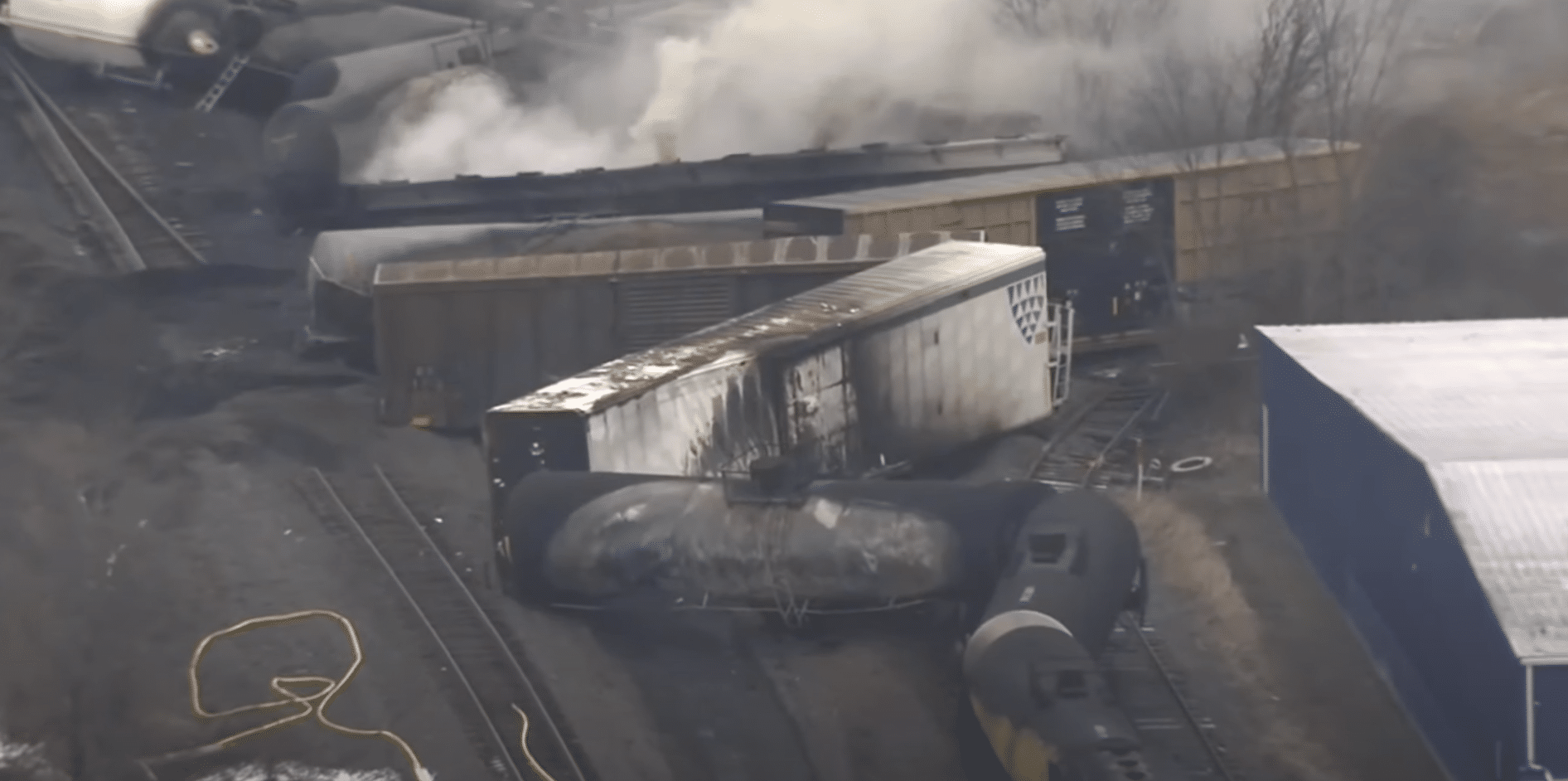The U.S. Environmental Protection Agency said the soil in East Palestine does not contain dangerous levels of a cancer-causing chemical. However, a past scientific recommendation from the EPA contradicts that assertation.
Earlier this month, Environmental Protection Agency regional administrator Debra Shore said there were “very low levels” of dioxins during a hearing of the U.S. Senate Committee on Environment and Public Works.
“We detected very low levels, which very quickly went even down to non-detect. Without those primary indicators, it was a very low probability that dioxins would have been created,” Shore told Congress. “They are secondary byproducts of the burning of vinyl chloride, but we were listening to the community and they expressed significant concerns about toxins.”
According to TheBlaze, The EPA waited a month before ordering dioxin testing near the toxic Norfolk Southern train derailment in East Palestine, Ohio. Pace Analytical, an independent lab based in Indiana, released a report on whether there were dangerous concentrations of chemicals in soil samples from East Palestine.
The Guardian reported, “Regulators establish the toxicity of dioxins in a soil sample by calculating the ‘toxicity equivalence’ of all dioxins in the soil compared with the most toxic dioxin compound, called 2,3,7,8 TCDD. East Palestine soil showed levels of ‘2,3,7,8 TCDD toxicity equivalence’ of 700 parts per trillion (ppt).”
Since 1998, the EPA determined that dioxin soil concentrations of less than 1,000 parts per trillion (ppt) were safe for residential areas and between 5,000 ppt to 20,000 ppt in commercial and industrial soil. Anything above those levels would trigger a cleanup.
However in 2010, the EPA proposed drastic reductions in what concentration of dioxin the agency determined to be safe based on the “best available peer-reviewed science.” The concentration of dioxins in the East Palestine soil samples is as much as hundreds of times greater than the threshold from the EPA’s safety recommendation from 2010.
The EPA declared in 2010, “Based on a consideration of oral and dermal exposures to dioxin, EPA has developed the following draft recommended interim PRGs for dioxin in soil: 72 ppt for residential soil and 950 ppt for commercial/industrial soil.”
The environmental agency stated, “EPA believes that these draft recommended interim PRGs would generally provide adequate protection against non-cancer effects, and generally should protect against cancer effects.” However, the EPA also considered lowering the threshold far more to protect Americans against cancer and other health issues.
“EPA is considering (and requesting comment on) an alternative concentration of 3.7 ppt TEQ in residential soil and 17 ppt TEQ in commercial/industrial soil as draft interim preliminary remediation goals,” the agency said in its Draft Recommended Interim Preliminary Remediation Goals for Dioxin in Soil.
The EPA proclaimed that the 3.7 ppt concentration “would be protective for cancer and non-cancer effects.” Mathy Stanislaus, EPA assistant administrator for solid waste and emergency response, said in 2010: “We’re driven by the need to protect against excessive risk of both cancer and non-cancer health concerns. We believe (the current standards) are not sufficiently protective and more stringent numbers are needed.”
The Obama administration killed the proposed decrease in the dioxin threshold at the time, according to Global News. Dioxin concentrations that require cleanups are much lower in several states, including 90 ppt in Michigan, and 50 ppt in California.










